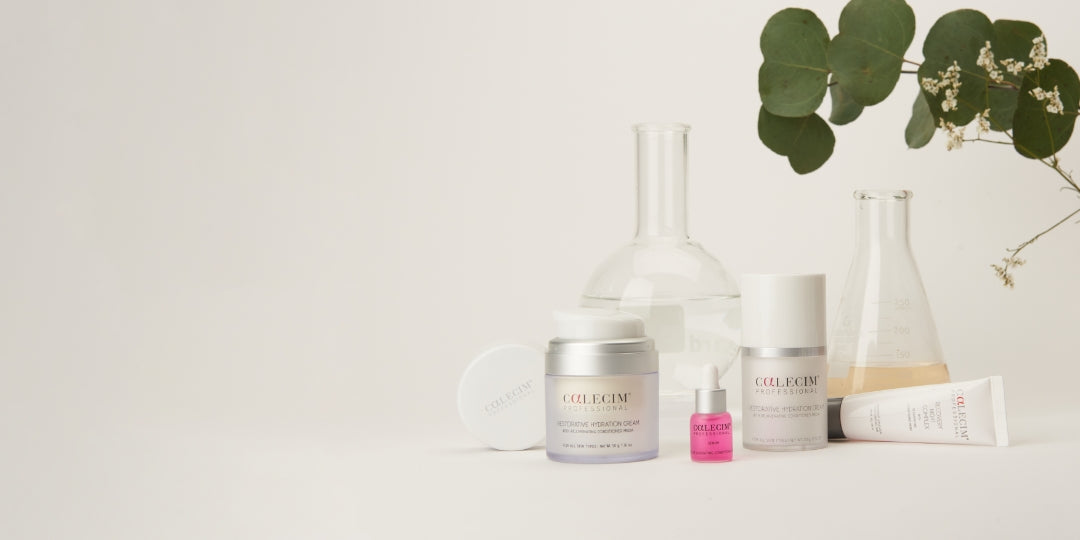Alopecia Areata: An abstract using CALECIM® Advanced Hair System with a 1.2mm derma stamp and red light
An alternative to steroid injections, creams and medications
Background
Alopecia Areata is a fairly common hair loss condition, however it can be difficult to manage due to its unpredictable nature. Patches of non-scarring hair loss appear with or without Dysesthesia in both men and women equally. Typically, 60% of patients presenting with their first patch of Alopecia Areata do so in their early 20’s. Areata can affect beards and other parts of the body such as eyebrows.
The cause of Alopecia Areata can be due to autoimmune disorders, genetics, stress or Thyroid-related issues and in some cases, causes are not entirely understood. Investigation and treatment are essential at the earliest opportunity.
Traditional treatment for Alopecia Areata usually consists of topical intralesional steroids in patients with 50% or less of the scalp affected. For example, Triamcinolone 5mg/ml with Lidocaine or saline. Injections should be repeated every 6 weeks until hair regrowth starts to appear. Steroids are usually performed at 1cm intervals with topical anaesthetic cream prior. Patients with Fitzpatrick skin types 3-6 should be advised that hypopigmentation can occur. If after 6 months of treatment, there is no visible sign of recovery, treatment should be ceased. Topical treatment application of Dithranol 0.5% + 5% Minoxidil has been used for Areata treatment in a half head study, where regrowth appeared at 24 weeks in 11% of patients. As with all medications, some patients will experience side effects which can be unpleasant. Immunotherapy and systemic steroids are other options, such as Diphenylcyclopropenone, Ciclosporin, or 5% Minoxidil used without Dithranol, which have varying degrees of effectiveness, however in many patients when treatment is ceased, patches can start to appear again depending on the cause. To highlight this condition’s unpredictability, in many cases of Alopecia Areata, some patients report regrowth without any medical intervention at all.
CALECIM® Case Study
When a lady in her early 50’s presented in my clinic with a patch of Alopecia Areata, my immediate decision was to refer her to a colleague, a Dermatologist specialising in treating hair loss of this nature for investigation and therapy. However further into the consultation, I discovered she was in remission from cancer and was nervous about using steroids or medications. Her preference was to use a natural, non-toxic treatment if one was available and exhaust all the other options before deciding on the use of steroids or other medications. Her blood tests showed no signs of underlying causes, no autoimmune disease or medical conditions, however she had been under stress due to work-related issues. We discussed the use of CALECIM® Advanced Hair System with the permission of her doctor, given its cellular youth messaging and excellent anti-inflammatory effects. The patient was 2 years in remission from cancer, her hair had grown back following her treatment without the need for medical intervention, however her Alopecia Areata patch had appeared just a couple of months before her visit. Following further discussions, she was happy to try CALECIM® Advanced Hair System.
Methods
- Advised the client to arrive with freshly washed and dry hair with no product in.
- Sterilise the skin of the Alopecia Areata patch and surrounding tissue. (Using Clinisept or Clinell 2% Chlorhexidine in 70% alcohol wipe).
- Using a Derma Stamp of 1.2mm depth, pass the needle stamp x3 vertically and x3 horizontally over the Areata patch & periphery, being careful not to damage surrounding hair which may be fragile. (An Alternative motorised derma pen or needling device can be used, however advised depth of 1.2mm for comfort)
- Apply half the vial of CALECIM® Advanced Hair System and massage in gently until all serum is absorbed. (2.5ml for 1 patch)
- Place the LED Red light device over the scalp area of concern for 20 mins.
- Client must not wash hair for 24 - 48 hours after.
- Repeat each week for 6 weeks.
Conclusion
This outcome would suggest the need for more case studies and a greater volume of participants in a clinical trial. CALECIM® Advanced Hair System has shown to effectively help this patient treat her Alopecia Areata without the need for medical intervention, however due to its unpredictable nature, a higher number of case studies would identify more robust data.

Photo 1: before the treatment, taken on 24th April 2022. Shows a patch of Alopecia Areata which had grown significantly over two months prior to her visit.
Photo 2: after 6 treatments, taken on 8th September 2022. Baby hairs can be seen growing through. A maintenance session was performed on this visit as per the protocol above.

Photo 3: Taken on 17th November 2022. Shows continued regrowth of the hair. Another maintenance session was performed as per the protocol above. In 5 months and with 7 completed sessions, the photos show continued hair regrowth in the Alopecia Areata patch.
On the clients last follow up in December 2022 following 8 treatments in total, complete recovery of her Areata patch was evident. The hair had continued to grow strong and healthy, with no steroids or medication used.


























